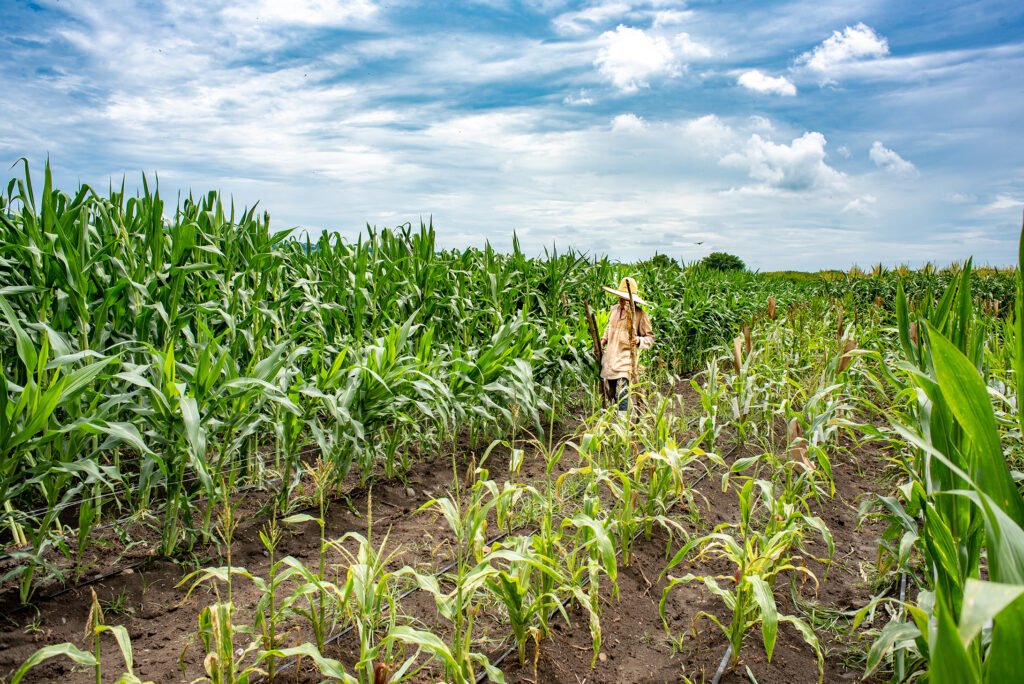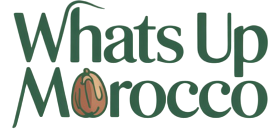
Imagine waking up to the gentle rustling of date palms, the scent of fresh earth, and the warm sun casting a golden hue over sprawling fields. For centuries, North African farmers have relied on age-old traditions to nurture their land and harvest crops vital for their communities. But as climate challenges intensify—droughts, erratic rainfall, and desertification threaten livelihoods—there’s a pressing need for a new approach: sustainable farming.
In this comprehensive exploration, we’ll delve into how North Africa is pioneering sustainable farming practices that marry tradition with innovation. From Morocco’s innovative water management to Egypt’s organic movement, you’ll discover how farmers, scientists, and policymakers are working hand-in-hand to cultivate a resilient, productive, and environmentally friendly agricultural landscape.
The Urgency of Sustainable Farming in North Africa
North Africa’s agriculture is at a crossroads. The region, encompassing countries like Morocco, Algeria, Tunisia, Libya, Egypt, and Sudan, faces unique challenges:
- Water Scarcity: The region is arid or semi-arid, with some countries receiving less than 200mm of annual rainfall.
- Desertification: Overgrazing, deforestation, and improper land use are expanding deserts, reducing arable land.
- Climate Change: Rising temperatures and unpredictable weather patterns exacerbate droughts and crop failures.
- Population Growth: Increasing demand for food strains existing resources.
According to the Food and Agriculture Organization (FAO), sustainable farming isn’t just an option; it’s an imperative for food security, economic stability, and environmental health. By adopting practices that conserve resources and restore ecosystems, North African farmers are proving that resilience and productivity can go hand-in-hand.
Traditional Practices Meet Modern Innovation
Many sustainable practices in North Africa build upon millennia-old traditions—like terracing and crop diversification—while integrating cutting-edge techniques such as drip irrigation, agroforestry, and organic farming. Let’s explore some prominent examples.
Water-Saving Technologies: Drip Irrigation and Rainwater Harvesting
Water is the lifeblood of agriculture in this region. The adoption of drip irrigation, pioneered by Israeli companies and adapted locally, allows farmers to deliver water directly to plant roots, minimizing waste. This method, supported by organizations like the International Water Management Institute (IWMI), has transformed agriculture in Morocco and Tunisia, enabling crops to thrive with significantly less water.
Additionally, rainwater harvesting—collecting and storing rain for later use—has gained popularity. Small-scale techniques like underground tanks and check dams help communities utilize seasonal rains efficiently, especially in rural areas where municipal water supply is limited.
Conservation Agriculture: Minimal Tillage and Cover Crops
Conservation agriculture emphasizes minimal soil disturbance, maintaining soil cover with crop residues or cover crops, and crop rotation. This approach enhances soil fertility, reduces erosion, and improves water retention. In Tunisia, farmers practicing conservation agriculture report increased yields and better resilience against droughts, supported by initiatives from FAO and local NGOs.
Agroforestry: Blending Trees and Crops
In Morocco, integrating trees like acacias or olive groves into farming systems not only provides shade and windbreaks but also improves soil health through nitrogen fixation and organic matter addition. Agroforestry systems promote biodiversity, sequester carbon, and create diversified income streams, aligning with global efforts to combat climate change.
Organic Farming and Local Food Systems
Organic farming is gaining momentum across North Africa, driven by consumer demand and environmental concerns. Egypt, for example, has seen a surge in organic vegetables and herbs, with farmers avoiding synthetic fertilizers and pesticides. This shift not only reduces chemical runoff into fragile ecosystems but also opens access to niche markets and premium prices.
Local food systems, including farmers’ markets and community-supported agriculture, foster direct relationships between producers and consumers. These models reduce transportation emissions, preserve local varieties, and encourage sustainable consumption.
Government Policies and International Support
Progress in sustainable farming is bolstered by governmental policies and international aid. Countries like Morocco have launched initiatives such as the Green Morocco Plan, aiming to modernize agriculture while conserving natural resources. Similarly, international organizations like the World Bank, FAO, and the African Development Bank provide funding, technical assistance, and capacity-building programs to promote sustainable practices.
For example, Egypt’s National Organic Agriculture Program offers incentives and training for organic farmers, aligning with global sustainability goals. These collaborations help scale successful practices and embed sustainability into national development agendas.
Challenges and Barriers to Adoption
Despite promising progress, barriers remain. These include:
- Limited access to affordable technology and financing.
- Knowledge gaps among farmers unfamiliar with new techniques.
- Cultural resistance to changing traditional practices.
- Land tenure issues that disincentivize long-term investments.
Addressing these obstacles requires tailored extension services, microfinance schemes, and community engagement to foster acceptance and participation.
Success Stories from the Field
The Oases of the Sahara: Sustainable Water Management in Algeria
In Algeria’s desert oases, innovative water-saving techniques like solar-powered drip irrigation and xeriscaping are transforming barren landscapes into productive farmland. Farmers collaborate with research institutes to develop drought-resistant crop varieties, ensuring food security in some of the harshest environments.
Tunisia’s Organic Olive Oil Boom
Tunisia, renowned for its olives, has seen a rise in organic olive farming. Farmers benefit from premium markets in Europe and the Middle East, while preserving biodiversity and soil health. Local cooperatives provide training and certification support, making organic farming accessible and profitable.
Egypt’s Urban Agriculture Renaissance
In Cairo, rooftop gardens and urban farms are sprouting across neighborhoods, promoting food sovereignty and reducing urban heat. These small-scale sustainable initiatives demonstrate how city dwellers can participate in eco-friendly agriculture, contributing to resilience amidst urban challenges.
Comparing Sustainable Practices: A Quick Overview
| Practice | Water Use | Soil Impact | Cost | Scalability | Environmental Benefits |
|---|---|---|---|---|---|
| Drip Irrigation | Low | Minimal erosion | Moderate | High | Water conservation, targeted watering |
| Rainwater Harvesting | Very Low | No soil disturbance | Low | Moderate | Drought resilience, resource efficiency |
| Conservation Agriculture | Moderate | Improves soil health | Moderate | High | Soil fertility, erosion control |
| Agroforestry | Low to Moderate | Enhances biodiversity | High | Moderate | Carbon sequestration, habitat diversity |
| Organic Farming | Variable | Builds soil organic matter | Higher | Moderate | Reduced chemical runoff, ecosystem health |
The Road Ahead: Actionable Steps for Sustainable Farming
For farmers, policymakers, NGOs, and consumers eager to embrace sustainability, here are practical steps:
- Invest in Water-Efficient Technologies: Subsidies and training for drip irrigation and rainwater harvesting can make a big difference.
- Promote Education and Awareness: Extension services and farmer field schools help disseminate knowledge about sustainable practices.
- Support Access to Finance: Microcredit and grants enable smallholders to adopt new methods without financial strain.
- Encourage Market Development: Certification schemes and organic markets incentivize sustainable production.
- Strengthen Policy Frameworks: Governments should integrate sustainability into national agricultural policies, aligning with international commitments like the UN Sustainable Development Goals.
Frequently Asked Questions
Q1: How does sustainable farming differ from conventional farming in North Africa?
Sustainable farming emphasizes conserving resources, maintaining soil health, and reducing chemical inputs, whereas conventional farming often relies heavily on synthetic fertilizers, pesticides, and intensive water use, which can degrade ecosystems over time.
Q2: Are sustainable farming practices economically viable for small-scale farmers?
Absolutely. While initial investments might be needed, many sustainable practices—like crop diversification and organic farming—can lead to higher-value products, lower input costs, and access to niche markets, improving livelihoods.
Q3: What role does climate change play in shaping sustainable agriculture in North Africa?
Climate change exacerbates water scarcity and increases the frequency of droughts. Sustainable practices help mitigate these impacts by improving water efficiency, enhancing soil retention, and building resilience to weather extremes.
Q4: Can traditional farming methods be integrated with modern sustainability techniques?
Yes. Many local practices, such as terracing and crop rotation, are inherently sustainable and can be complemented by modern innovations like drip irrigation or organic fertilizers for heightened effectiveness.
Q5: How can consumers support sustainable farming in North Africa?
By choosing organic, locally-produced foods, supporting farmers’ markets, and raising awareness about sustainable agriculture, consumers can drive demand for environmentally friendly products.
Conclusion: Cultivating a Sustainable Future for North Africa
North Africa stands at a pivotal moment. The convergence of traditional wisdom, innovative technology, and committed policy can transform the region’s agriculture into a resilient, sustainable system. These practices are more than just farming techniques—they embody a vision of harmony with nature, economic vitality, and social well-being.
The journey toward sustainable farming requires collective effort: from farmers embracing new methods, governments implementing supportive policies, NGOs providing education, and consumers making conscious choices. As we look toward the horizon, the stories of success emerging across North Africa inspire hope and demonstrate that with innovation and perseverance, the land can continue to nourish generations to come.
For those interested in further exploring sustainable agriculture, resources from the FAO, World Bank, and regional research centers offer valuable insights and practical tools. Together, we can support a future where farming sustains both people and the planet.
Embark on this journey with open hearts and curious minds—because sustainable farming in North Africa isn’t just about crops; it’s about cultivating hope.
